Chapter 4, Part 21
Everything seems so familiar as I step out of the plane that takes me from Bangkok to Yangon. The clean and airy modern airport terminal looks just how I remember it, and the squiggly Burmese script is as mysterious as it is beautiful. The line at the immigration, however, is longer this time. I hand my passport to a young female officer at the counter. She scrutinizes it and asks, “How much did you pay for the e-visa?”
“I forgot.”
“50 dollars?” she inquires.
As an Indonesian citizen, I am able to enter Myanmar without a visa for 14 days. But on this trip, we plan to stay in the country for 17 days, hence the e-visa.
“Next time you come, don’t get a visa. If you overstay three days you only pay nine dollars – three dollars per day. Cheaper for you.”
She’s probably the only immigration officer anywhere in the world who actually encourages visitors to overstay. What a strange yet delightful welcome this is.
Three years can be too short to see palpable changes in a city. But three years after my first visit to Yangon the city appears to be experiencing a rapid development never seen in the decades prior to the country’s opening up to the world in 2011. The once outdated domestic terminal has been modernized, old cars are disappearing from the streets, Mercedes-Benz and BMW dealers have opened their first stores in the country, and traffic congestion has become the new normal in some parts of the city.
In January 2012, Yangon still felt like a city-sized time capsule. However, it seems to have embraced capitalism in earnest as investment begins pouring into Myanmar following the lifting of some sanctions imposed on the country by the international community. In 2012, I had to exchange my U.S. dollars to Myanmar kyat at the hotel where I stayed. But three years later, ATMs can easily be found throughout the city, and most of them accept international bank cards, a sign of the country’s fast integration within the world financial system.
As getting kyat becomes a lot easier, so too is it easier to spend. Foreign companies are quickly tapping into the huge business opportunities the country provides: Myanmar’s first ever KFC store has opened in downtown Yangon; a Malaysia-based department store introduces consumerism to the local people; and Coca-Cola’s first factory in the country produces a thirst-quencher that is otherwise ubiquitous in many parts of the world, but was previously hard to find in Myanmar. In addition, Norway’s Telenor, Qatar’s Ooredoo, and even BNI (one of Indonesia’s largest banks) have also entered the increasingly competitive market.
Scenes of the city’s economic boom quickly dissipate, however, as we walk down 33rd Street, one of many numbered streets in Yangon’s grid plan – a vestige of the British colonial time. We stay in an old but clean hotel on the same street, where from our third-floor room the daily life of ordinary Yangoners unfolds before our eyes: Young monks and nuns go on foot asking for alms, while a family sits cross-legged watching TV in the apartment directly opposite. Towering above everything else is the Sule Shangri-La, previously known as Traders Hotel, as well as cranes working on the construction of a new office building.
At the heart of the grid plan is a gleaming gilded Buddhist stupa called Sule Pagoda. As the focal point of the old part of Yangon, it is one of the most recognizable landmarks of the city – along with the more impressive Shwedagon to the north. Around the pagoda are some of the city’s most well-preserved old edifices, including the City Hall, the former High Court building and smaller British-era structures. Further south, facing the Yangon River, is Strand Road where some of Yangon’s finest colonial gems were erected. This waterfront strip of old “Rangoon” reminds James of Shanghai’s Bund, also home to a collection of impressive European structures.
The unusually large number of colonial buildings in Yangon is the result of two things: the city’s importance as the capital of Burma under British rule and Myanmar’s isolation from the world for decades, which has prevented rampant development from obliterating most of Yangon’s historic buildings. Yangon and other regions in Lower Burma were seized by the British following their victory in the Second Anglo-Burmese War in 1852. Soon afterward, the city’s increasing wealth attracted people from outside Burma, notably from South Asia, to move into Yangon, creating a diverse multicultural scene which is evident to this day.
Hindus, Muslims and Jews came in droves to seek better opportunities in Rangoon – Yangon’s old name. In 1854, Musmeah Yeshua Synagogue was constructed in the Indian quarter of the city, home to immigrant communities, where mosques and Hindu temples were also built. The synagogue not only served Jews coming from India, but also Sephardic Jews from Iraq. Today, however, the number of Jews in Yangon has dwindled to a little over a dozen. Meanwhile, ethnic Indians or South Asians who once made up more than 50% of Yangon’s population during British colonial rule now make up only a fraction of the city’s five million residents.
The march toward modernity is inevitable for Yangon and its people. Restriction of access to information has been lifted, free speech is warmly welcomed, foreign visitors numbers have increased exponentially, and businesses flourish. As we explore Sule Paya – the neighborhood around the pagoda – we pass by two cinemas. Back in 2012, both places only played old Hollywood movies, but this time Everest and The Martian are playing – both were released in the U.S. just a few weeks earlier.
A lot of old, rusty coaches have been replaced by second-hand Korean and Japanese buses. They, together with brand-new private cars, create a rather perplexing sight on streets all over the country: most cars have the steering wheel on the right even though Myanmar does not drive on the left. This is a remnant of military junta rule whose leader in 1970, General Ne Win, instructed the country to switch the driving side from the left to the right. No one really knows the reason behind this abrupt change.
A handful of luxury cars are spotted during our four-day stay in Yangon. However, the majority of people still use public transport to commute or go around the city. Men wearing longyi (Burmese traditional sarong) and women daubing thanaka (made from thanaka wood, used as sun screen) on their faces are still a common sight in this rapidly-changing metropolis. Learning from the mistakes of other Asian cities when they razed historic buildings to make way for development, Yangon Heritage Trust was established one year after the country opened up to the world. Its sole objective is to conserve buildings with historical value in the city with the most colonial buildings in Asia.
Car plates and street names are now written in numerals and Latin script, reflecting Myanmar’s openness to change. Nevertheless, the classic problem of a widening wealth gap in developing countries is certain to become a serious issue if preemptive measures are not taken to ensure a just distribution of wealth to the people. I wonder how Yangon will look like three years from now.
Click here for the full list of stories from the Spice Odyssey series.
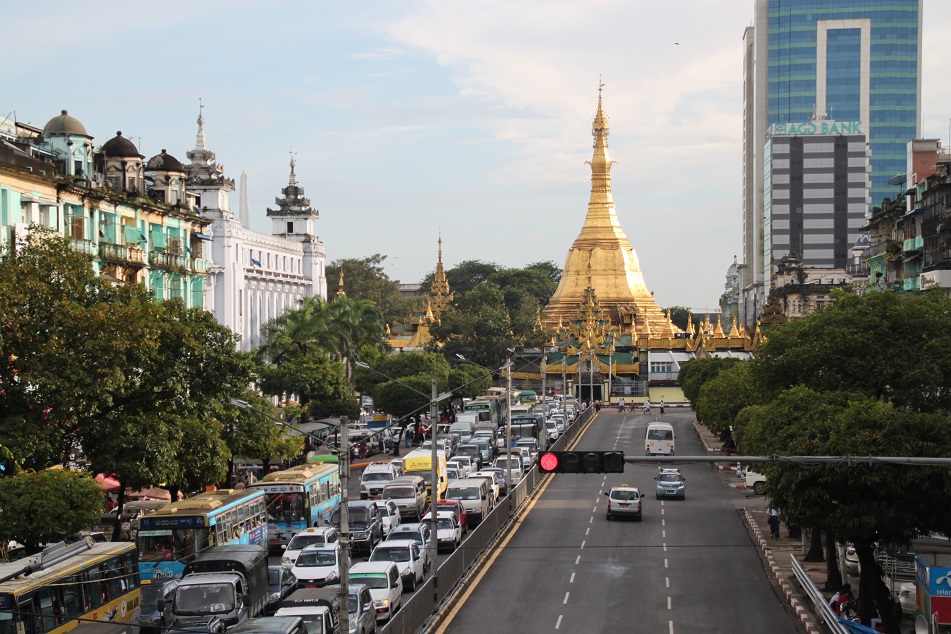
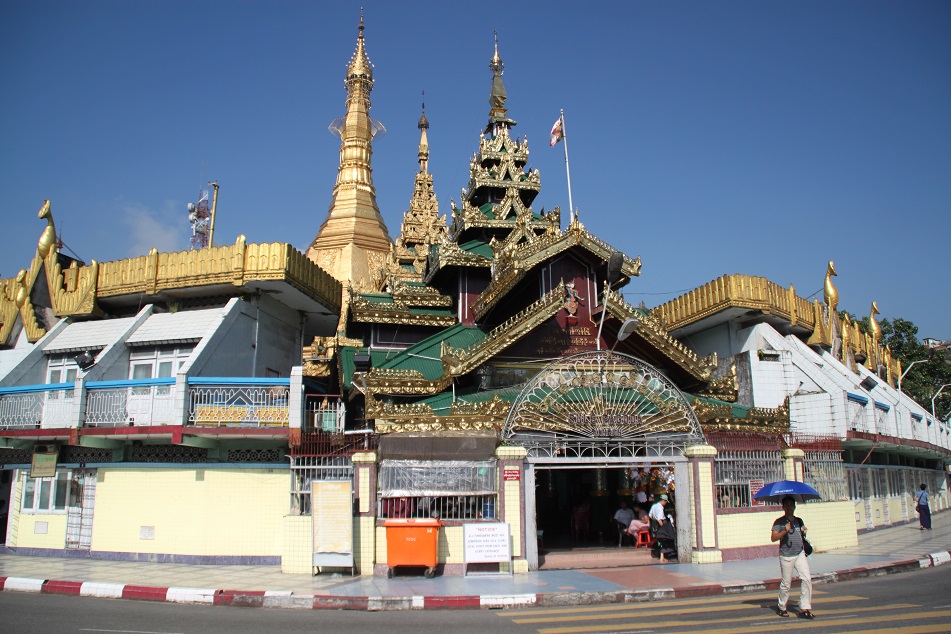
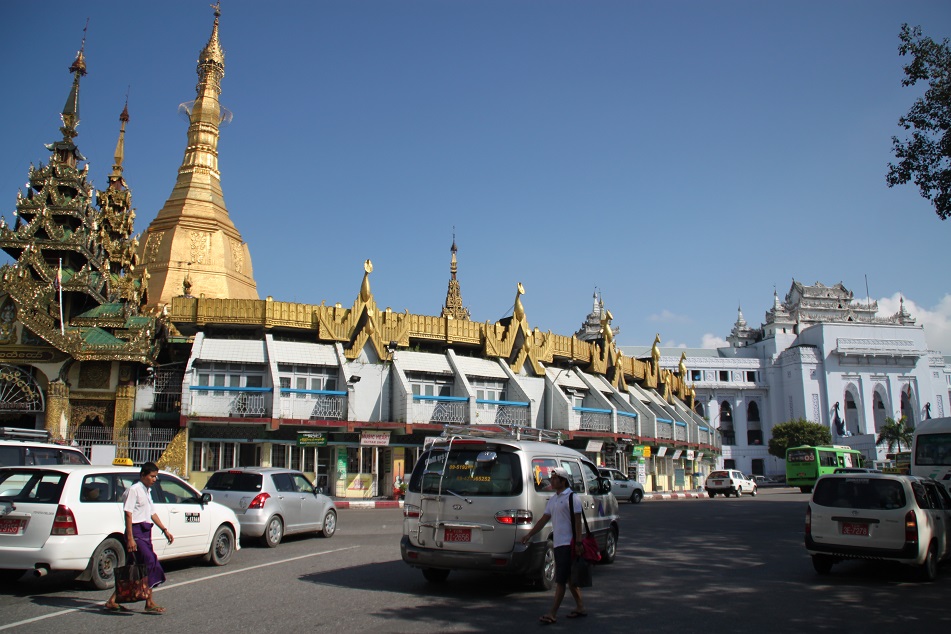

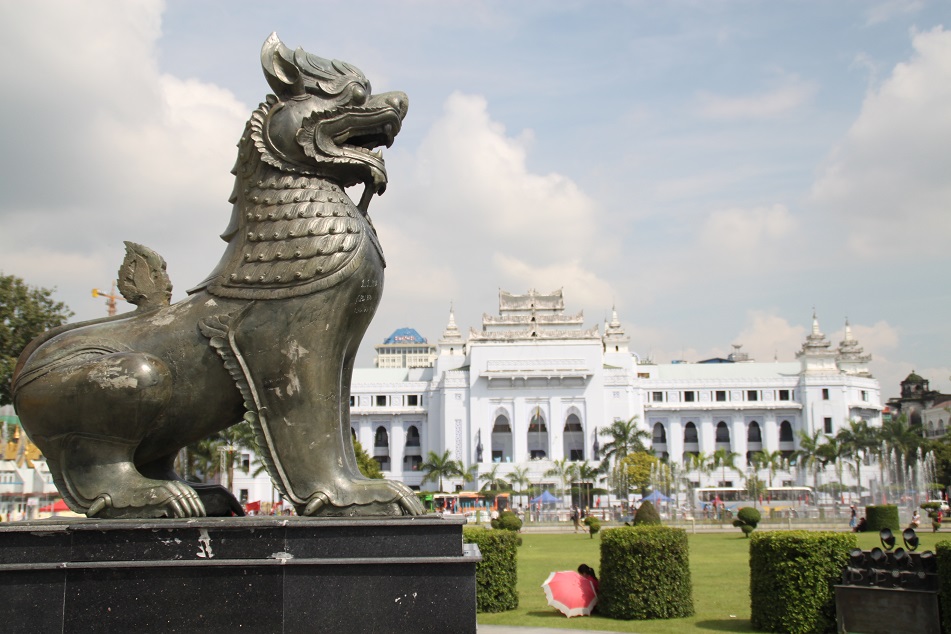
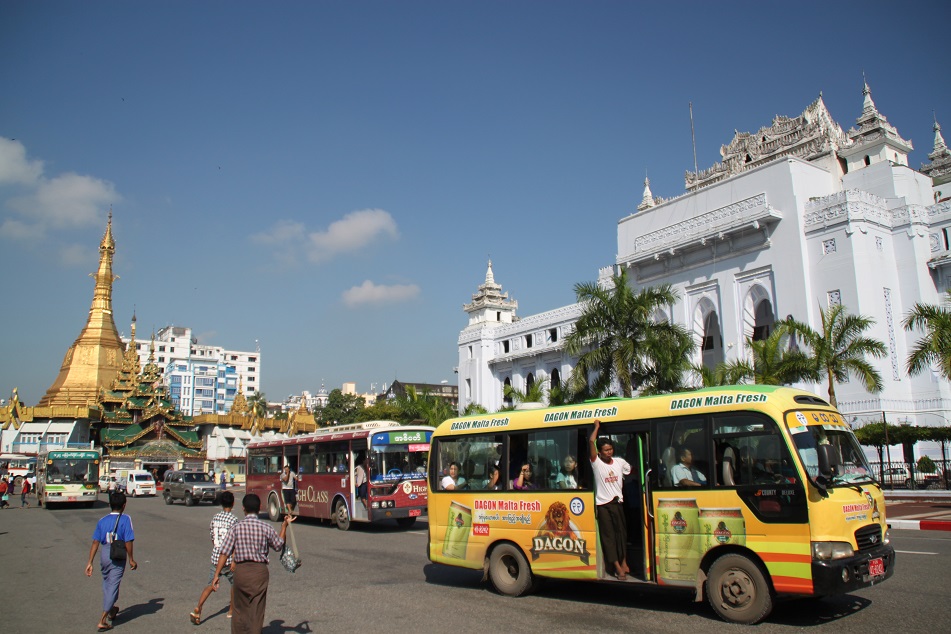
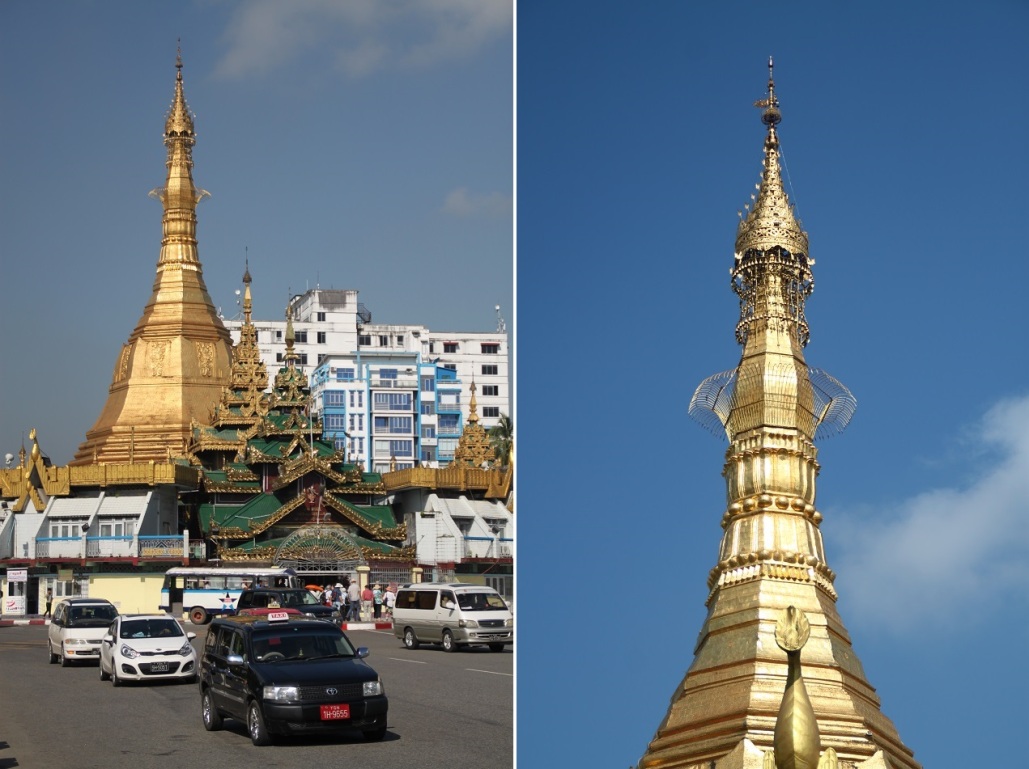
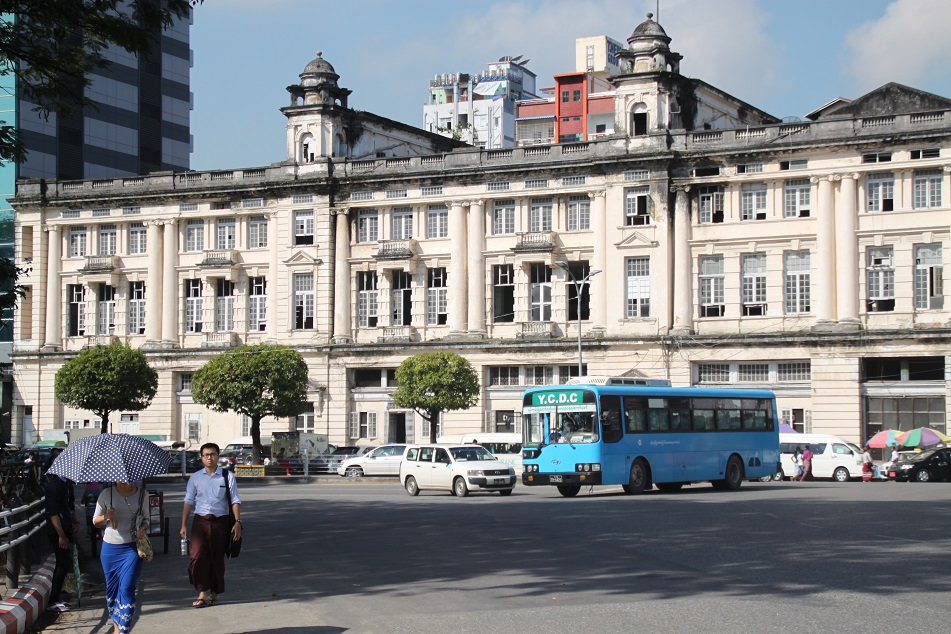
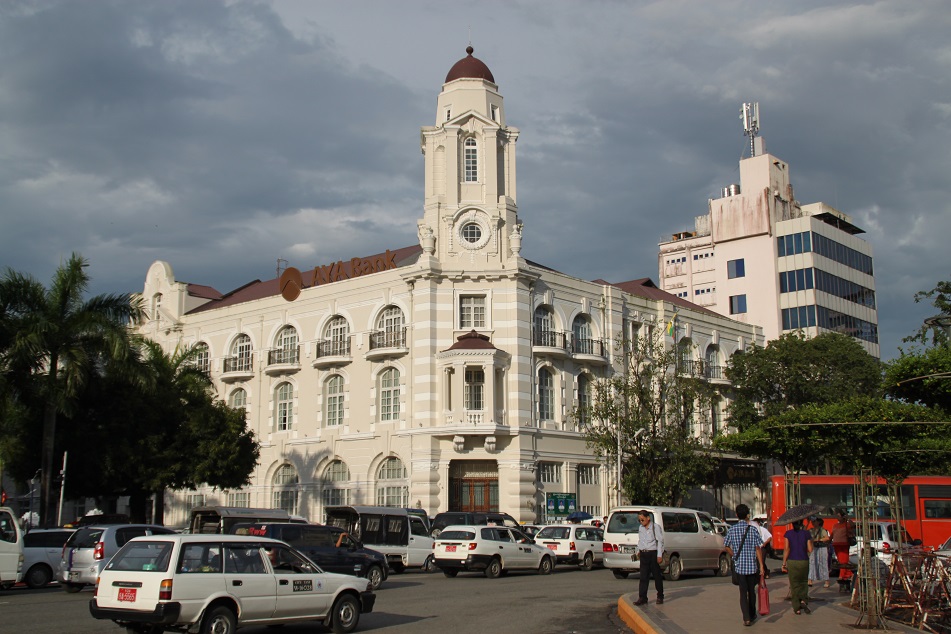
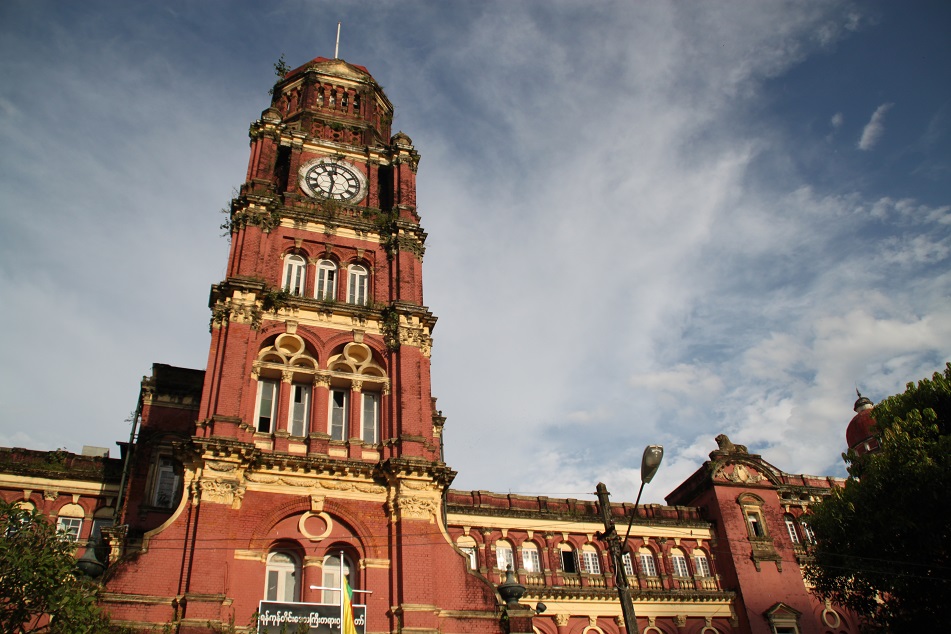


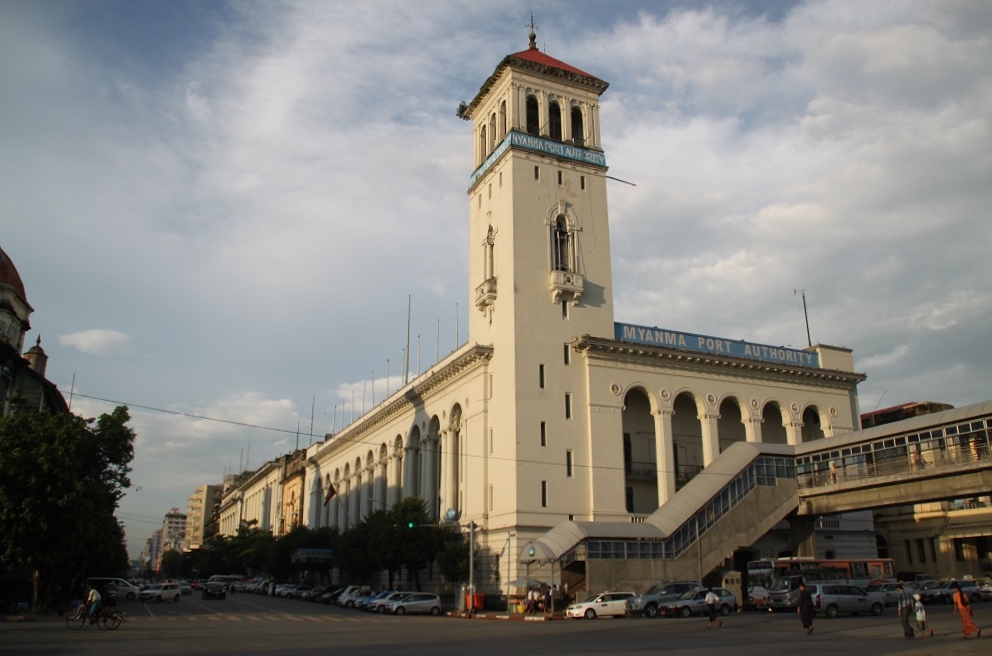
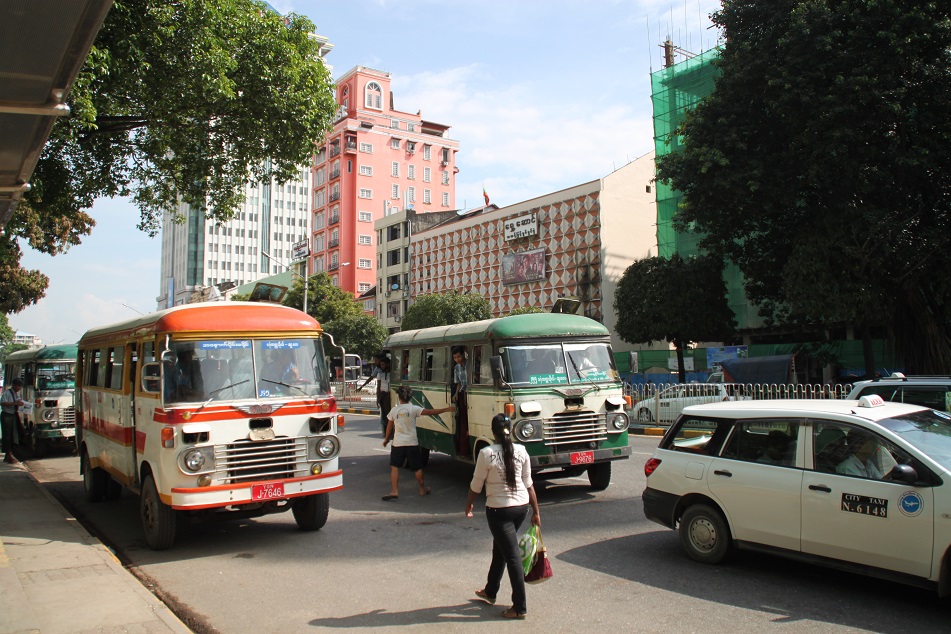


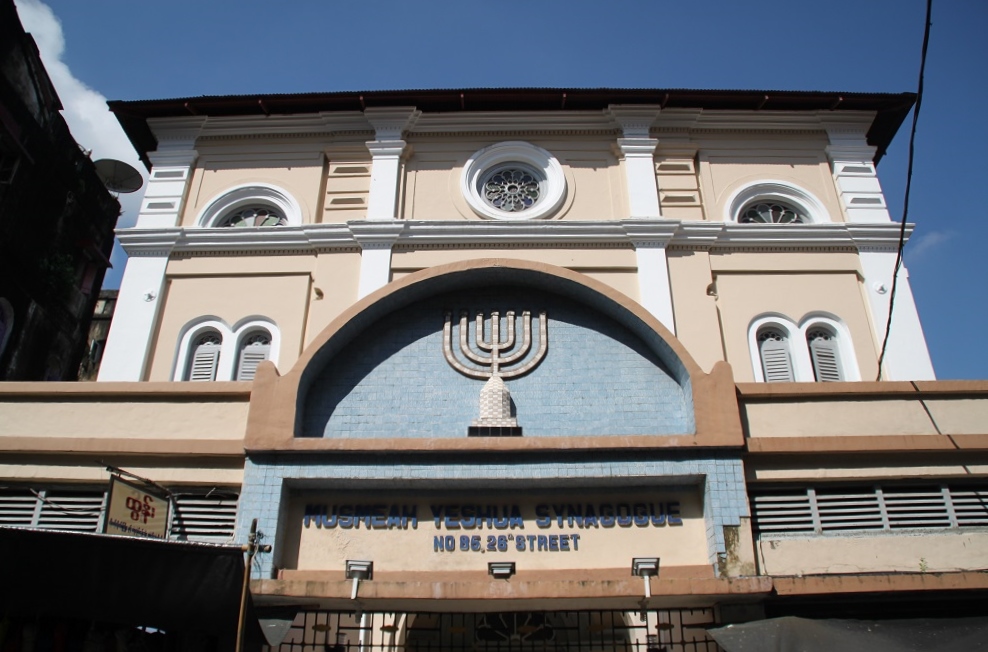
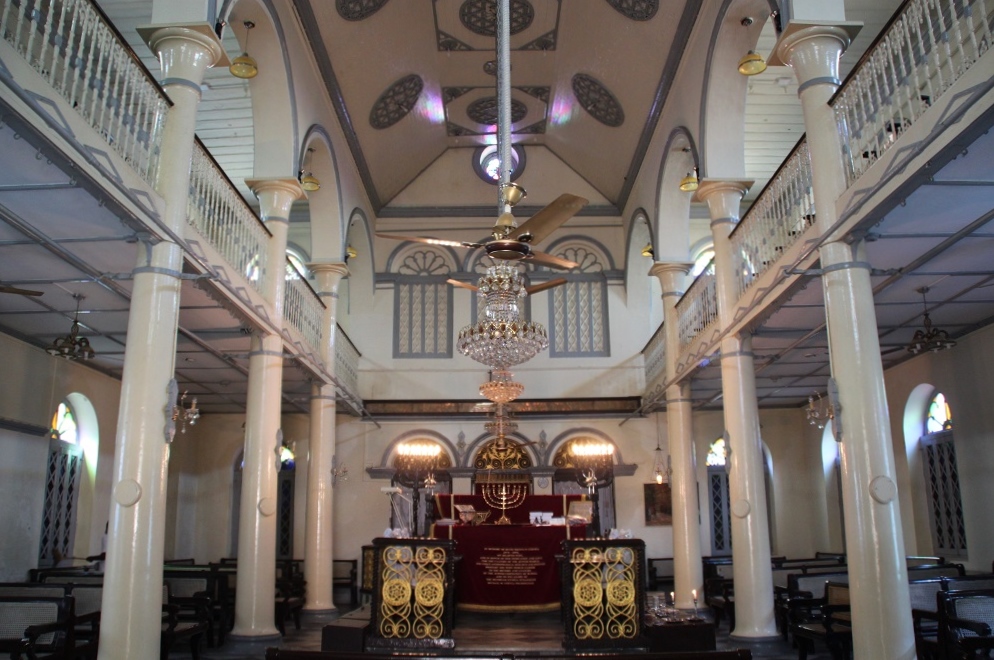
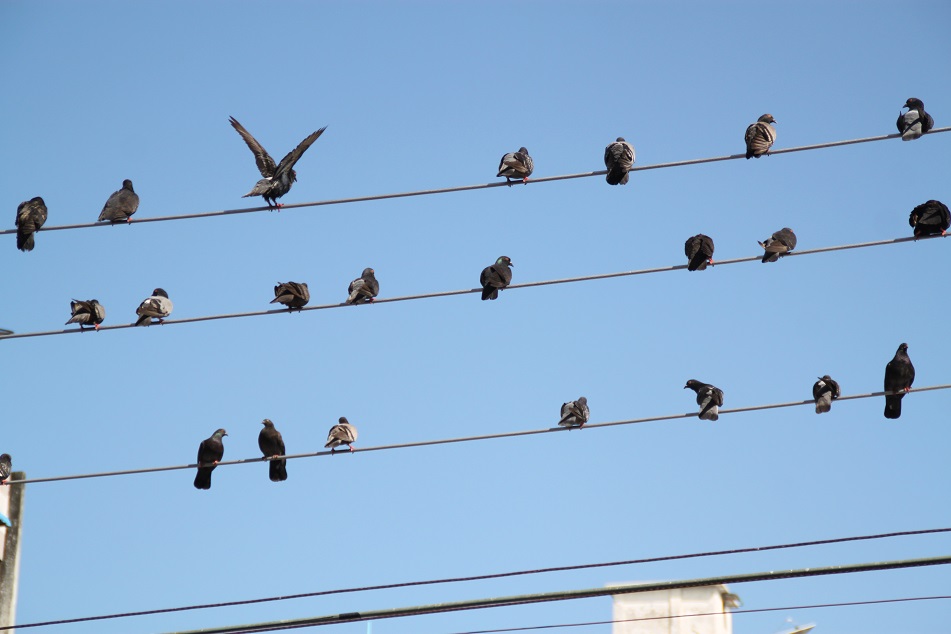
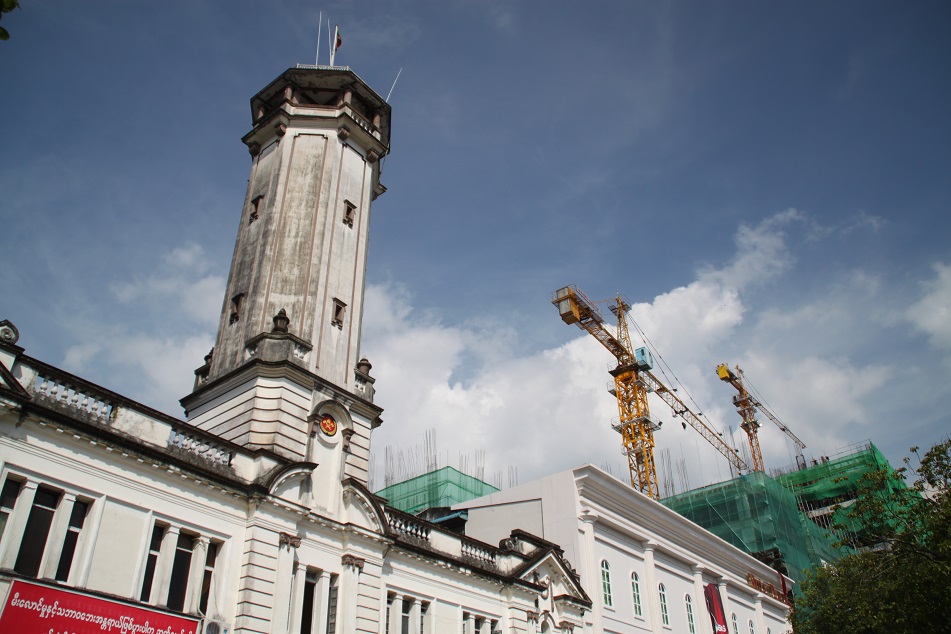
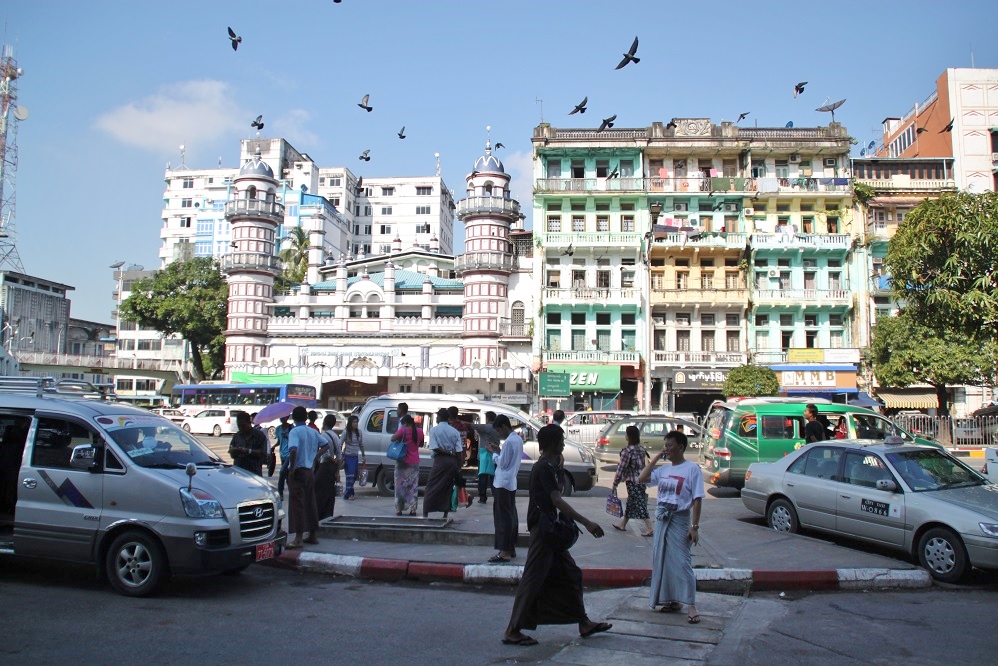
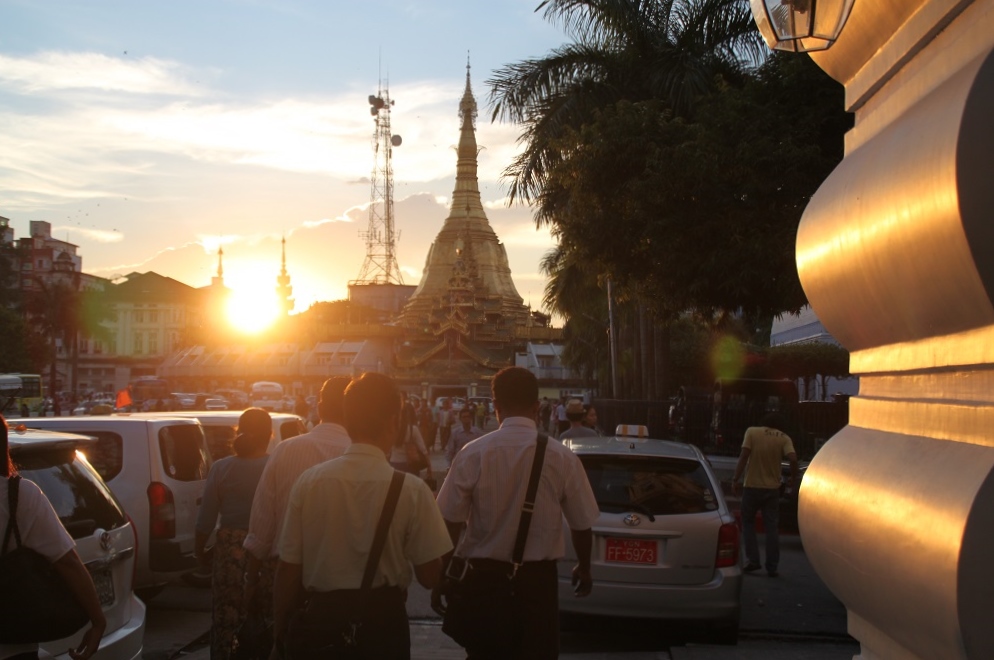
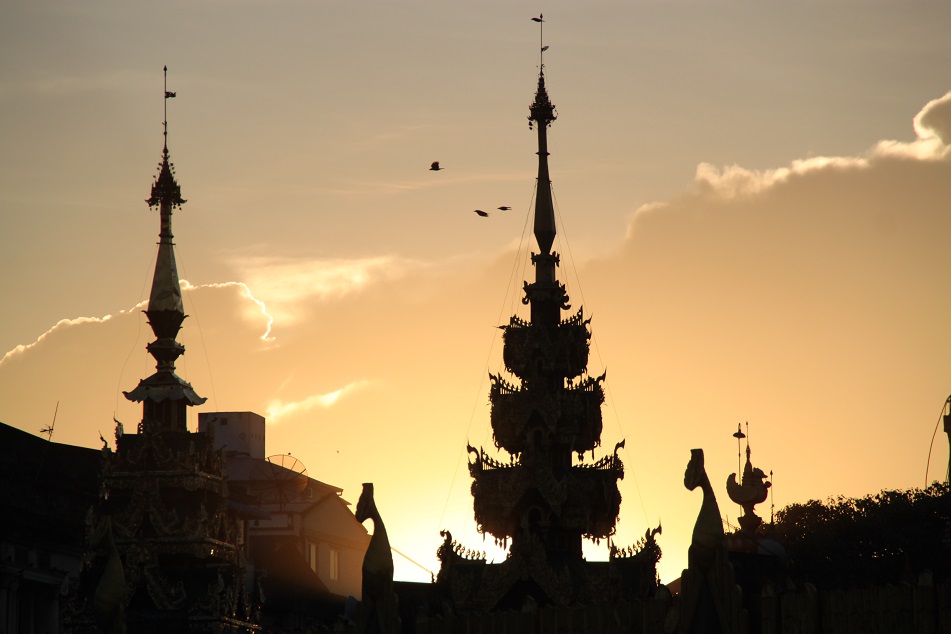
Great post and photos. It seems I should have gone 6 years ago when I had a chance…
LikeLike
Thanks Deano! If you get the chance to visit Myanmar anytime soon, I would say you should take it. Yes, the country is changing fast. But it is still a far cry from Thailand which has seen mass tourism for so many years.
LikeLiked by 1 person
Thanks, I am seriously considering it. I am also glad I travelled in Cambodia some 16 years ago. I believe the scourge of bars and the like have taken over many places?
LikeLike
I’m afraid so. If you look at the pictures of Kuta, Bali in the 1970s, it looked completely different from the place it has become today. Learning from cases like this, Bhutan implemented a hefty fee for foreign travelers, partially to deter people who are only interested in getting drunk from visiting the country.
LikeLiked by 1 person
Beautiful photos! Enjoying your site!
LikeLike
Thank you for dropping by and leaving such kind words!
LikeLike
Great article and amazing photos! Also thanks for the tips with the visa 🙂 I might not stay longer than 14 days but it is good to know that it cost only 3$ for 1 day overstay.
LikeLike
Thanks! I’m glad you enjoyed this post. About the overstay, I wonder if other immigration officers would have reacted differently about my case. What she said truly was something I clearly didn’t anticipate.
LikeLiked by 1 person
I think the immigrant officer that you met is an exception. Most of the time, they are not so nice 🙂 They either remain silent or ask you some question regarding your stay. They rarely talk to you. In some cases, they even asked for bribery (for example at Siem Reap Airport). I had to pretend that I did not understand them so after awhile they had to let me go 🙂
LikeLike
Indeed she was! I have never come across a situation where I have to bribe an immigration officer, and I certainly hope I won’t. But it’s really shocking that you experienced such thing at Siem Reap Airport considering the city’s position as the gateway to the most important site in Cambodia. I’m glad you ended up not paying him a bribe though.
LikeLiked by 1 person
Same old story, isn’t it? Place opens up to foreigners, tourists discover it, and the cultural atmosphere is altered forever. So grateful that I got to visit Thailand 25 years ago in 1992. I’m not sure that I’ll have the chance to visit Myanmar anytime soon, but hopefully Thailand-style “evolution” will be held off for a while yet.
LikeLike
We, as tourists, of course expect a place to retain its charm. Places like Thailand and Bali show us that uncontrolled mass tourism brings immense pressure to the local culture as well as the environment. However, Myanmar can always learn from such places so that in many years to come the country will reap benefits from the increasing number of international visitors without sacrificing its unique culture. The same thing can be said about places which have recently opened up to much of the world, like Cuba and Iran.
LikeLike
Mas Bamaaaaa…. Yangon berubah yaaa… Aduh jadi pengen liat lagi kesana (nah nambah lagi kan?) Dulu ketika saya kesana, belum ada ATM, mungkin ada cuma 1 di Hotel bintang 5, belum ada jaringan ATM internasional, bawa dollar harus banyak dan pristine deh…
Itu sinagog yang ga jauh dari Sule kan? Dulu mau kesana (pengen liat dalemnya) tapi waktu itu udah harus ke Bago jadi batal deh… Foto-fotonya mas Bama kali ini benar-benar mengingatkan akan Yangon deh, kan penginepan saya waktu itu deket banget dengan mesjid sebelah Sule itu. Bener2 harus diseriusin nih kesana, masih pengen ke Mawlamyine soalnya hehehe…
LikeLike
Iya mbak, lumayan drastis perubahannya. Sekarang bawa kartu ATM aja udah cukup, padahal tiga tahun sebelumnya saya harus bawa U.S. dollar baru ditukerin ke kyat. Yes betul, sinagog itu gak jauh dari Sule Pagoda. Di tengah-tengah keramaian, sinagog itu sepi banget, karena jumlah penganut Yudaisme di Yangon memang tinggal dikit. Eh saya malah baru tau lho tentang Mawlamyine. Barusan googling dan nemu pulau namanya Pulau Shampoo di sana. 🙂
LikeLiked by 1 person
Sebenarnya kalo ke Mawlamyine atau Moulmein, lebih karena alasan kenangan sih karena ayah saya pernah cukup lama disana, jadi pengen napak tilas aja, seperti saat saya menikmati setiap langkah di Shwedagon. Mudah-mudahan sih bisa terlaksana…
LikeLike
Wow, jadi ayah Mbak Riyanti di sana waktu Myanmar masih terisolasi dari dunia luar ya. Semoga kesempatan untuk ke Myanmar bisa datang lagi segera ya mbak, biar bisa puas napak tilas.
LikeLiked by 1 person
It is always a little sad for the traveler to see changes that take away from the old character, but the local people almost always appreciate and benefit from it. I hope they can keep the colonial buildings and all the old town in tact. I really love that city. I think it has a unique character.
That is funny about the immigration official. $3 per day is not a bad deal.
LikeLike
Balancing development with preservation of culture is really no means feat. As you said, on one hand it is the culture that attracts people to come to a place. On the other hand, more visitors means more business. However, I’m glad to know that the Yangon Heritage Trust was established right after the country opened up to the world.
I was sweating all the time in Yangon — it was among the most humid cities during my six-month trip. Yet, I loved it. I loved the atmosphere, the colonial buildings, the pagodas, and the overall energy of the city.
LikeLike
amazing post! i can almost hear the sounds of the old buses and smell the musty air of the colonial buildings (if that makes sense). anyway, i’m inspired to see the beauty of Yangon with my own eyes.
LikeLike
Actually, that is more or less a fitting description of Yangon. Hope you get the chance to visit this intriguing city sooner than later. I really appreciate your time reading this post!
LikeLike
Lots of interesting info here! Well written!
LikeLike
Thanks for dropping by! Glad you enjoyed my posts.
LikeLike
I would love to visit Myanmar – some of your images remind me of Cuba – old cars and old building 🙂 But I guess it will change soon.
LikeLike
And I would love to visit Cuba, before too many things change. But don’t we all do? I was heartened by some blog posts about Cuba because in spite of the current developments regarding to the normalization of relations between the U.S. and Cuba, Havana seems to be able to retain its charm and charisma — the very reason why Cuba is so appealing to many of us.
LikeLike
Thank you for another visual feast this time on Yangon! Your report always gives an objective impression, which I really like. It seems like Myanmar is looking into bright future. That gives hope that things can change for the better, especially after such a horrible past that Myanmar had to endure.
LikeLike
I do hope the country is moving to the right direction. So much homework still needs to be done, but they can always learn from their neighbors to follow what have been done right, and to prevent the same mistakes from happening in Myanmar. Always appreciate your encouraging words, Peter.
LikeLiked by 1 person
Yangon looks a pretty combination between buddhist temples and british old buildings.
But a friend of mine, just came back from Yangon, said it was hot, dirty, and dusty. Then i guess, hm, Yangon is a many-faces city like Jakarta 🙂
LikeLike
Yangon was hot and humid as we went there right at the end of the rainy season. But speaking of the city’s cleanliness, it’s not that different from that of any major Indonesian cities. 🙂 Nug, you would love Yangon’s historical buildings!
LikeLike
Yes, I know I would love historical buildings in Yangon, mas! Oh, i wish i will be there soon.
I see, so it’s like being in Indonesia with addition of some buddhism temples
LikeLike
Well, more or less. Hope you visit Myanmar really soon, Nug!
LikeLike
Amen. Myanmar is already on my list but.. well, timbul tenggelam gitu deh hahaha.
I’ve just read your entire post here (duh ketauan banget), the government’s concern in preserving those old buildings is a good policy, hope our government will do the same, even better.
LikeLike
We all surely hope so. Those historical buildings are such invaluable assets that need preserving.
LikeLiked by 1 person
I love the visa story! (And the rest of the post, of course.) Seems like I’d better hurry up and get here.
LikeLike
The same goes for me after reading your posts on Cuba, Lex. Oh when you happen to visit Myanmar, maybe you’d want to drop by Indonesia as well. 🙂
LikeLiked by 1 person
I would indeed! I’ll keep you posted … 🙂
LikeLiked by 1 person
It’s interesting to see how quickly a place can change. I enjoyed the post and also learned from the comments of other readers and you. Thanks!
LikeLike
I was shocked to see how fast Yangon has changed in just three years’ time. But I really shouldn’t have been surprised at the first place given how fast information is shared nowadays. Whenever an interesting place is ‘discovered’, the next day people from the other side of the world will find out about it instantly. I guess we all should learn to live with this new normal, and learn to manage our expectations. Thanks for reading, Marilyn.
LikeLike
What a lovely tribute to one of Southeast Asia’s most fascinating cities. I can only imagine what Yangon was like when you first visited back in 2012. It really felt like a boom town by the time we got there on the Spice Odyssey – the sense of change and opportunity was palpable in the air. I’m so glad a number of quick-thinking individuals had the foresight to establish the Yangon Heritage Trust… the wanton destruction of so many historical buildings in other Asian cities (like my native Hong Kong for example) should not be repeated.
LikeLike
Thanks James. Back then, the only up-to-date thing I experienced during my three-day stay in Yangon was a Spider-Man movie on TV. I remember trying really hard to explain to my taxi driver to take me to the airport on my last day in the city — I even had to make a gesture of a plane with my right hand and the runway with my left hand. I guess today most, if not all, taxi drivers in the city know what airport means. This makes me think of places most people avoid right now — Yemen, Somalia, Iraq, etc. One day when peace has come to those places and tourists start visiting, what’s happening in Myanmar at the moment may repeat.
LikeLiked by 1 person
Wah.. Kak Bama.. terima kasih ya.. tulisan tentang Yangon bikin saya bernostalgia.. hehe.. padahal belum setahun sejak saya kesana. Thanks banget ya Kak..
Duuh.. saya malah ngga nemuin synagog itu.. 😭 *jadi satu alasan untuk kembali lagi ke Yangon.. hehe
LikeLike
Sama-sama Kak Celina. Sinagog itu memang lokasinya agak nyempil sih. Tapi di Google Maps cukup jelas kok lokasinya. Next time ke Yangon jangan lupa mampir ke sana ya.
LikeLiked by 1 person
Pingback: Bangkok and the Anglo-French Tug of War | What an Amazing World!
Great post – looking forward to visit Myanmar soon!
LikeLike
Thanks Kate. Hope you have a really great time in Myanmar!
LikeLike
Cool photos, really like the top one!
LikeLike
Hi Josh. Thanks for dropping by and leaving such a kind comment. Glad you enjoyed the photos! And hopefully one day you’ll try that dish in the first photo yourself.
LikeLike